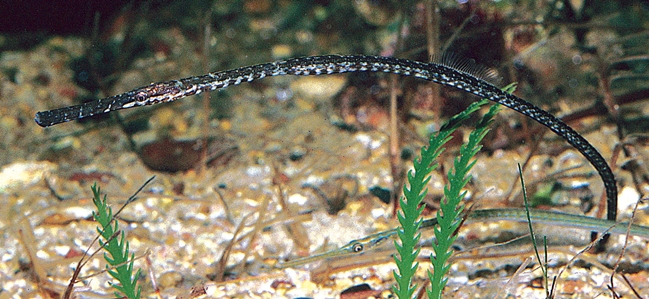General Description
Body long, slender; snout elongate, deep, compressed; body rings slightly elevated making the body surfaces slightly rough; tail not prehensile. Mostly brownish, plain or pale, mottled and blotched, sometimes with diffuse pale bars on the back. To 32 cm.
Biology
Juveniles are pelagic, remaining near the surface until more than 10 cm in length. In Port Phillip Bay, Victoria, they are commonly seen in association with large jellyfish when oceanic waters run into the Bay. Pregnant males have not been collected.
Habitat
Seagrass beds and adjacent sand flats in shallow coastal bays and estuaries, in depths of 0-10 m.
Soft substrates
Seagrass meadows
Distribution guide
South-eastern Australia.
Species Group
Fishes › Seahorses, pipefish and allies
Depth
Water Column
Max Size
32 cm
Commercial Species
No
Global Dispersal
Native to Australia
Identify
Conservation Status
- DSE Advisory List : Not listed
- EPBC Act 1999 : Not listed
- IUCN Red List : Not listed
- Fisheries Act 1995 : Protected Aquatic Biota





